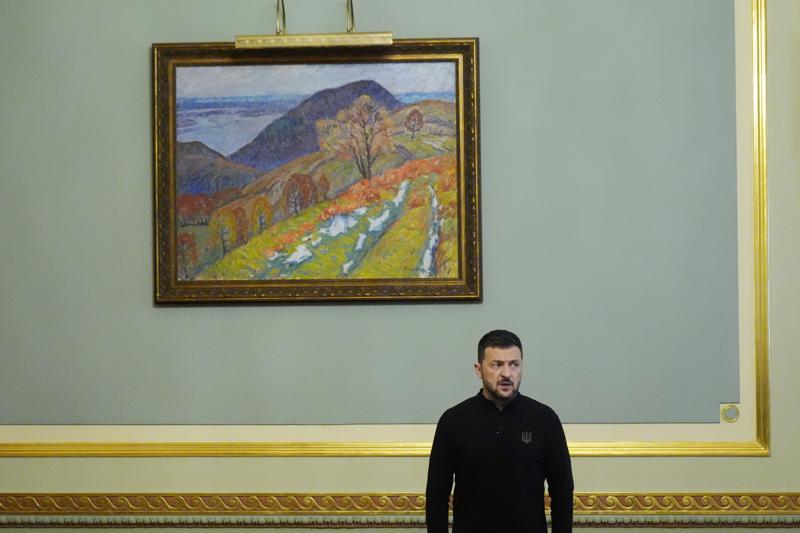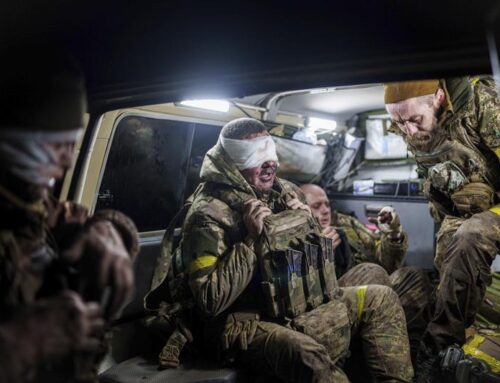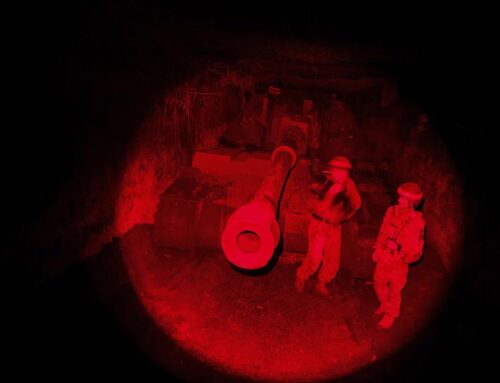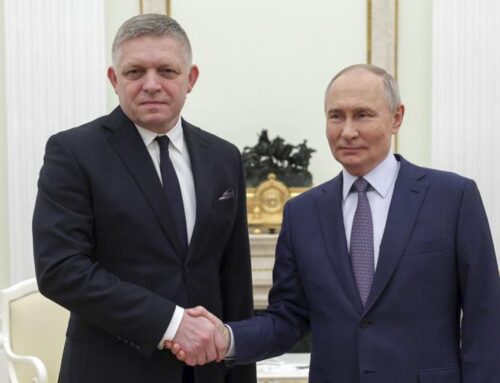KYIV, Ukraine (AP) — Russia has launched a counteroffensive in its Kursk region to dislodge Ukraine’s forces who stormed across the border five weeks ago and put Russian territory under foreign occupation for the first time since World War II, Ukraine’s president said Thursday.
Russia’s Defense Ministry said that Moscow’s forces had recaptured 10 settlements in Kursk and listed their names but didn’t describe the fighting as a counteroffensive. Ukrainian President Volodymyr Zelenskyy said Russia was taking “counteroffensive actions” but that Ukrainian forces had anticipated the moves and were ready to fight.
Ukraine launched its daring incursion into Kursk on Aug. 6, partly in the hope that Russia would divert its troops there from Donetsk in eastern Ukraine where a push by the Russian army is threatening to overrun a belt of key defensive strongholds.
The cross-border operation also raised Ukrainian morale after months of gloomy news from the front by exposing Russian vulnerabilities and seizing some initiative on the battlefield. It also sought to establish a buffer zone to prevent Russian attacks.
Moscow’s muddled response suggested Russia hadn’t planned for such a development and was caught by surprise. Assembling forces for a counterattack, given the long distances involved and other demands along the 1,000-kilometer (600-mile) front line, was expected to take some time.
The Russian army has been hacking its way deeper into eastern Ukraine, especially Donetsk, and has battered Ukrainian territory with relentless missile and drone attacks.
A Russian missile attack Thursday killed three people and injured two others, all of them Ukrainian workers with the International Committee of the Red Cross, Ukraine’s Human Rights Ombudsman, Dmytro Lubinets said.
The toll was the largest among staffers at the Geneva-based humanitarian organization since a bomb blast killed three at the Aden airport in Yemen in 2020.
The key eastern Ukraine city of Pokrovsk is without a drinking water supply or natural gas for cooking and heating, authorities said, as the Russian army’s attritional slog across the Donetsk region lays waste to public infrastructure and forces civilians to flee their homes.
A water filtration station in Pokrovsk was damaged in recent fighting, and more than 300 hastily drilled water wells are the city’s last source of drinking water, Donetsk regional Gov. Vadym Filashkin said.
The previous day, Russians destroyed a natural gas distribution station near Pokrovsk, Filashkin said. Some 18,000 people remain in the city, including 522 children, he said. More than 20,000 people have left in the past six weeks as Russian forces creep closer to residential areas, Filashkin said.
“Evacuation is the only … choice for civilians,” he added.
Pokrovsk is one of Ukraine’s main defensive strongholds and a key logistics hub in the Donetsk region. Its capture would compromise Ukraine’s defensive abilities and supply routes and would bring Russia closer to its stated goal of capturing the entire Donetsk region, which it partially occupies.
Russian troops backed by artillery and powerful glide bombs have turned Donetsk cities and towns such as Bakhmut and Avdiivka into bombed-out shells, though the push has cost Russia heavily in troops and armor.
U.S. Secretary of State Antony Blinken on Thursday ended a Ukraine-focused European tour after hearing repeated appeals from Ukrainian officials to use Western-supplied weaponry for long-range strikes inside Russia.
President Joe Biden has allowed Ukraine to fire U.S.-provided missiles across the border into Russia in self-defense, but has largely limited the distance they can be fired. Extending the limit could bring Russian retaliation.
Russian President Vladimir Putin in turn warned that allowing long-range strikes “would mean that NATO countries, the United States, and European countries are at war with Russia … if this is so, then, bearing in mind the change in the very essence of this conflict, we will make appropriate decisions based on the threats that will be created for us.”
Ukrainian forces have held out as long as possible in Donetsk, even when strongholds such as Chasiv Yar appeared to be in danger of imminent collapse.
Russia has fired missiles especially at the power grid, potentially dooming Ukrainians to a bitterly cold winter this year.
The United States and Britain pledged nearly $1.5 billion in additional aid to Ukraine on Wednesday during a visit to Kyiv by their top diplomats. Much of that will go to restoring the electricity supply.
“We’re again seeing Putin dust off his winter playbook, targeting Ukrainian energy and electricity systems to weaponize the cold against the Ukrainian people,” Blinken said. An overnight drone attack on Konotop, a town in Ukraine’s northern Sumy region, largely knocked out the electricity supply, regional officials said.
The blasts also blew out an “incredibly high number” of windows in the city and damaged many of the town’s tram tracks, Mayor Artem Semenikhin said.
Russia launched a total of 64 Shahed drones and five missiles over eastern, central, and northern regions of Ukraine, Ukraine’s air force said in its Thursday morning report.
Ukraine has expressed frustration that its Western partners won’t let it use sophisticated modern weapons they supply to hit places inside Russia where the missiles and drones are launched from. Some Western leaders fear that would trigger an escalation of the war.
But after Iran recently supplied ballistic missiles to Russia, according to the U.S., those rules of engagement could be set to change in coming days as heavier Russian bombardments could swamp Ukraine’s meager air defenses.
Pentagon spokesman Lt. Col. Charlie Dietz said Thursday that U.S. long-range guided missiles, such as ATACMS, wouldn’t be able to reach all the locations from where Russia launches some of its assets. He added that “the supply of ATACMS is finite, and we need to be judicious about where and when they are deployed.”
In other developments, Ukrainian Military Intelligence claimed to have shot down a Russian Su-30SM jet over the Black Sea.
A post on the agency’s social media Thursday said the warplane was hit with a portable surface-to-air missile.
Also, Zelenkskyy posted photos of a ship loaded with grain that he said was struck by a Russian missile Thursday shortly after leaving Ukrainian territorial waters.
The merchant ship was taking wheat to Egypt, Zelenskyy wrote on his Telegram page, adding that nobody was injured in the strike.
Ukraine last year managed to break through Russia’s Black Sea blockade and ship millions of tons of grain using a route that hugs Ukraine’s southern coast.
___
Tara Copp in Washington and Jamey Keaten in Geneva contributed.
___
Follow AP’s coverage of the war in Ukraine at https://apnews.com/hub/russia-ukraine
This article first appeared on APnews.com








Leave A Comment